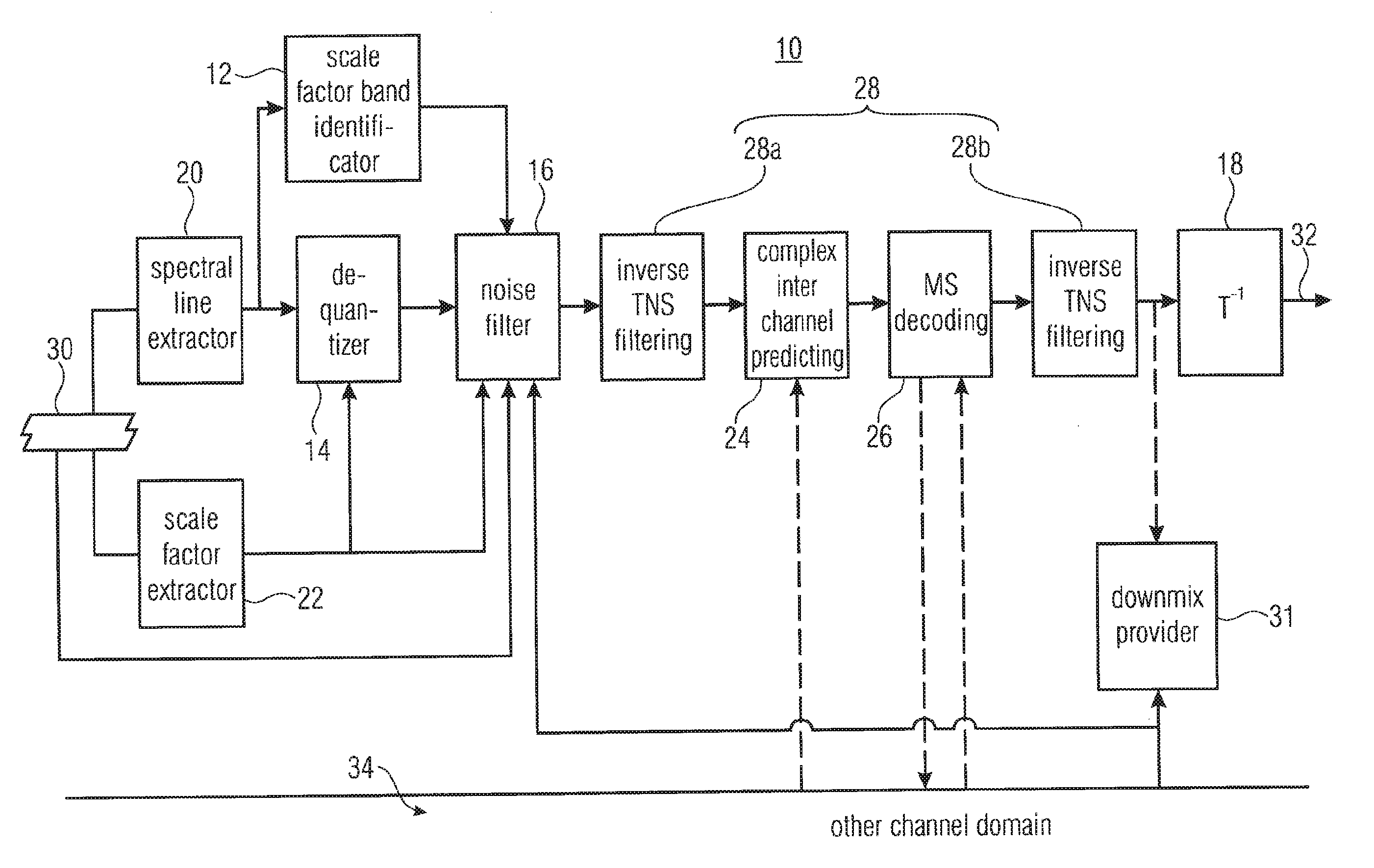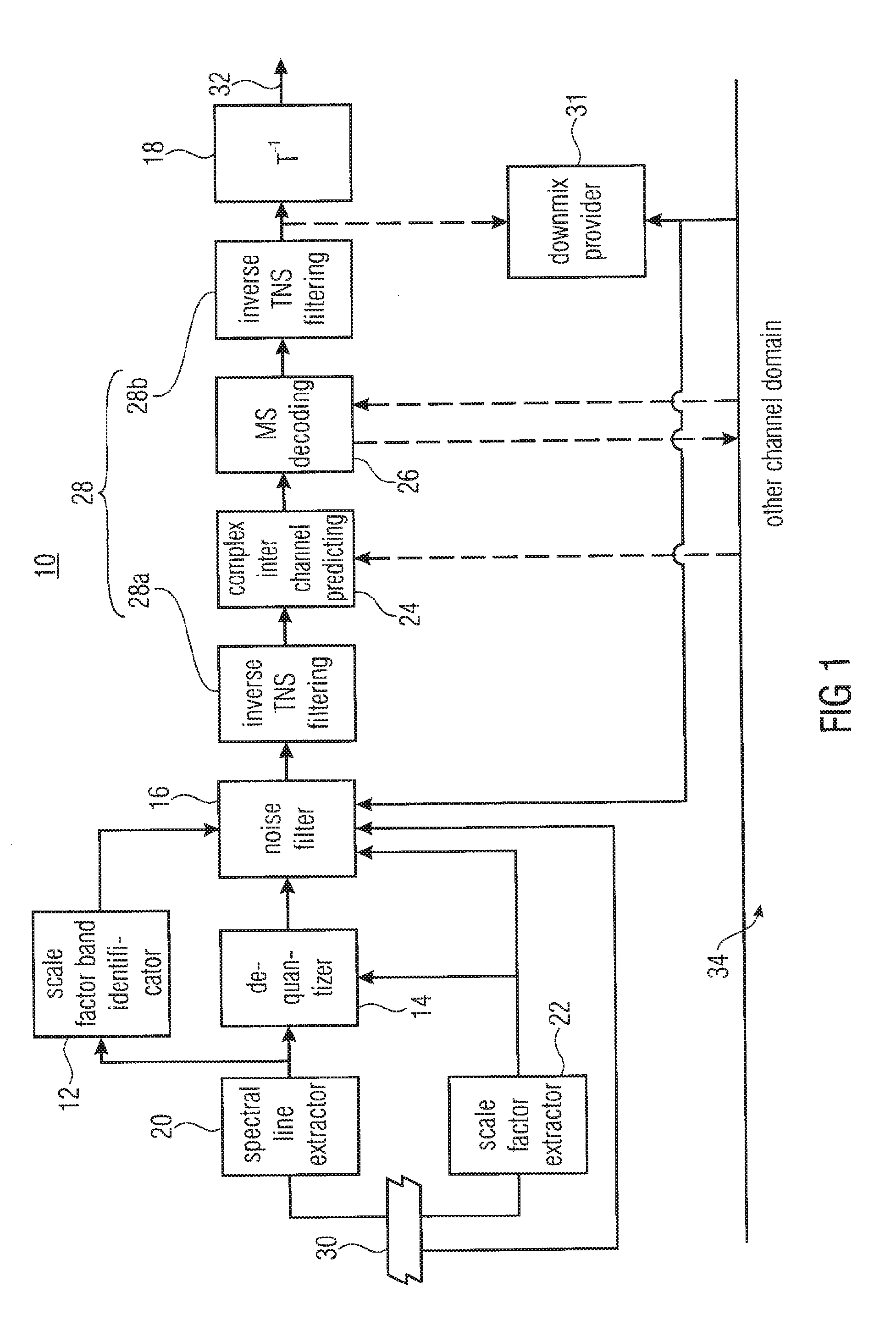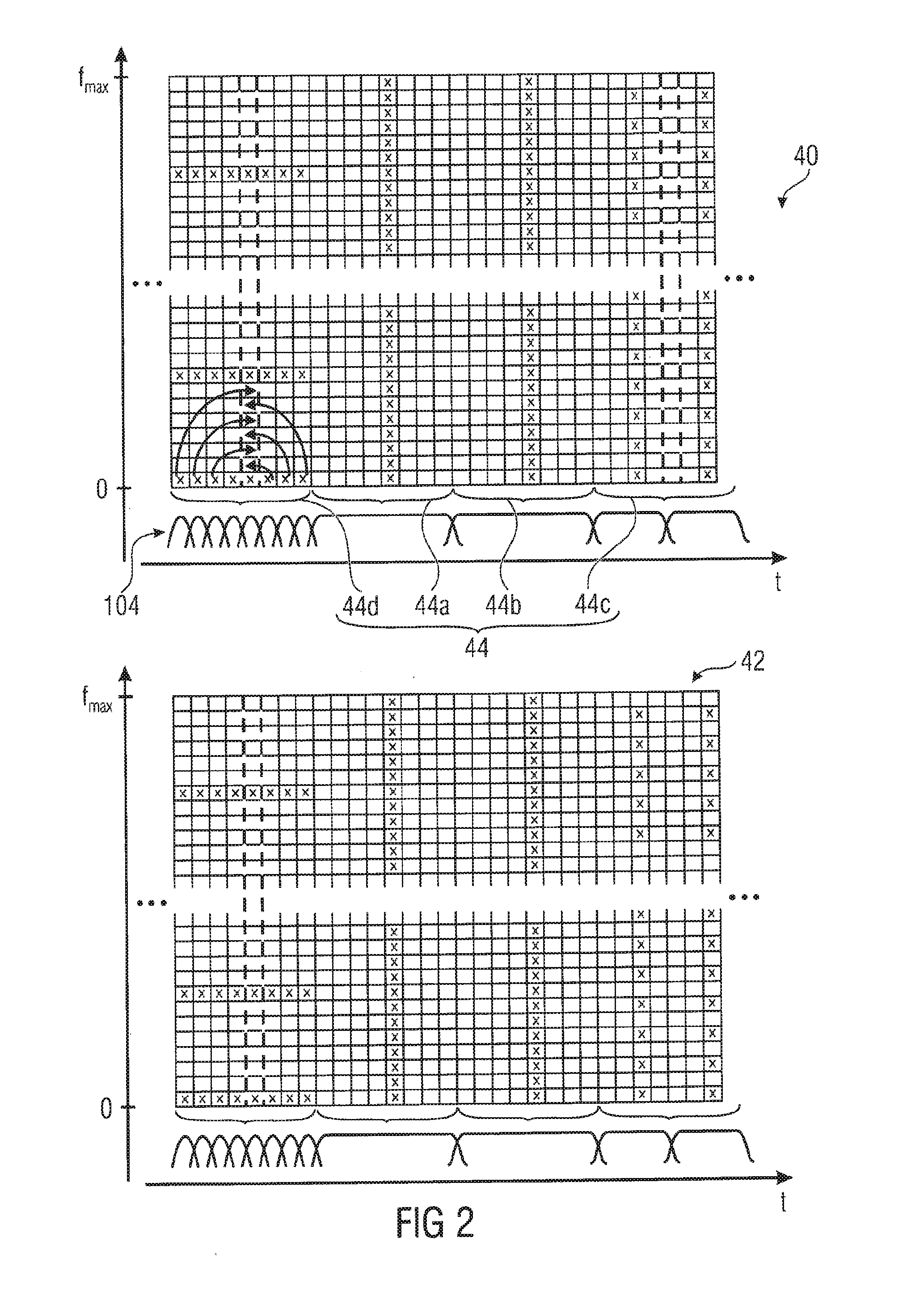Noise filling in multichannel audio coding
- Summary
- Abstract
- Description
- Claims
- Application Information
AI Technical Summary
Benefits of technology
Problems solved by technology
Method used
Image
Examples
Embodiment Construction
[0025]FIG. 1 shows a frequency-domain audio decoder in accordance with an embodiment of the present application. The decoder is generally indicated using reference sign 10 and comprises a scale factor band identifier 12, a dequantizer 14, a noise filler 16 and an inverse transformer 18 as well as a spectral line extractor 20 and a scale factor extractor 22. Optional further elements which might be comprised by decoder 10 encompass a complex stereo predictor 24, an MS (mid-side) decoder 26 and an inverse TNS (Temporal Noise Shaping) filter tool of which two instantiations 28a and 28b are shown in FIG. 1. In addition, a downmix provider is shown and outlined in more detail below using reference sign 30.
[0026]The frequency-domain audio decoder 10 of FIG. 1 is a parametric decoder supporting noise filling according to which a certain zero-quantized scale factor band is filled with noise using the scale factor of that scale factor band as a means to control the level of the noise filled ...
PUM
 Login to View More
Login to View More Abstract
Description
Claims
Application Information
 Login to View More
Login to View More - R&D
- Intellectual Property
- Life Sciences
- Materials
- Tech Scout
- Unparalleled Data Quality
- Higher Quality Content
- 60% Fewer Hallucinations
Browse by: Latest US Patents, China's latest patents, Technical Efficacy Thesaurus, Application Domain, Technology Topic, Popular Technical Reports.
© 2025 PatSnap. All rights reserved.Legal|Privacy policy|Modern Slavery Act Transparency Statement|Sitemap|About US| Contact US: help@patsnap.com



